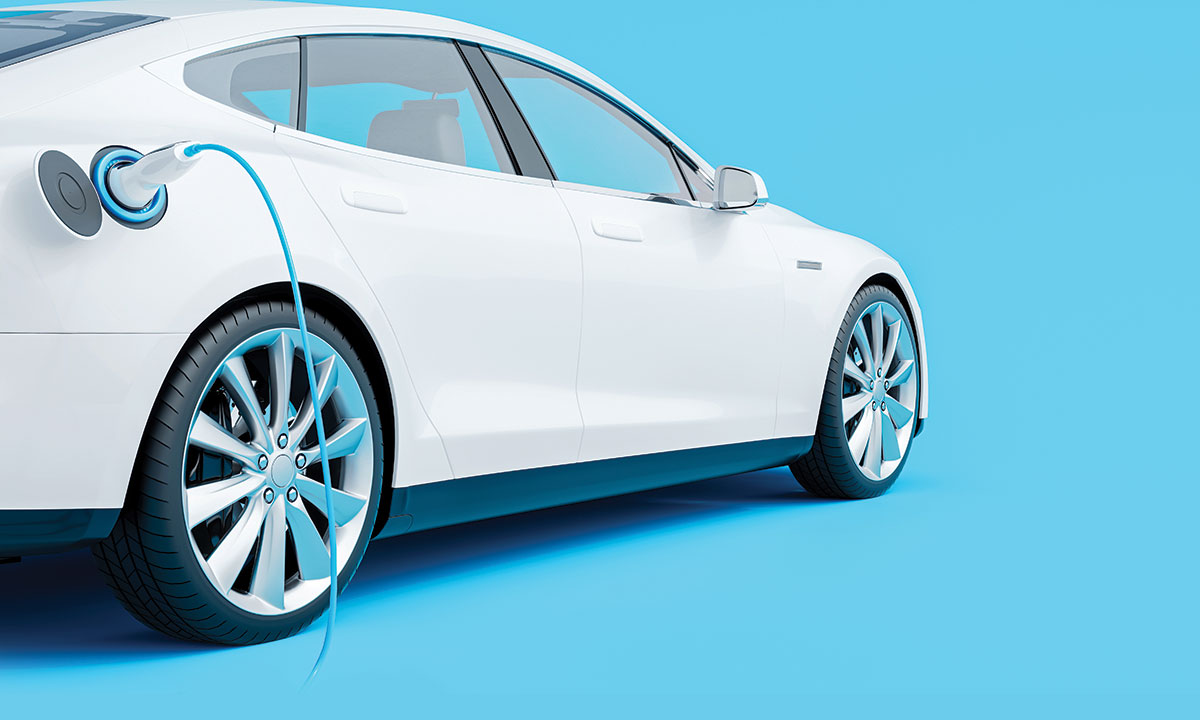The rise of electric vehicles and the trend of increasing popularity among consumers will have an impact on fixed ops—both the department and its profitability
As governments push for greater adoption of electric vehicles and automakers prepare to launch more electrified models, many dealers are wondering: how will this shift impact my fixed ops department and its profitability?
It is a worthy consideration among the mountain of questions dealers may have, because the rise of EVs is expected to have a negative impact on fixed ops revenue, according to AutoVerify’s Chief Operating Officer Keith Murray.
In an interview with Canadian auto dealer, Murray said dealers will ultimately see a decrease in revenue and profitability in this area of their business, as the “maintenance needs for EVs are different and the time between servicing is going to be longer.”
“Some of the service needs that are inherent with an internal combustion engine just don’t exist with an EV, and that is going to have a negative impact on service departments,” said Murray, adding that “the one caveat is the time horizon. I think it (the negative impact) will be seen, but it will be seen over a fairly long period of time.”
Murray said a large number of EVs will be coming to market within the next several years. A 2022 Cox Automotive update from Chief Economist Jonathan Smoke reveals that new products from Ford, Hyundai, Kia, Volkswagen and Volvo are driving solid growth in the United States. Nearly 1.5 million electrified vehicles (EVs, hybrids and plug-in hybrids) were sold in the U.S. in 2021—up 86 per cent from the 783,477 units in 2020.
However, as Murray notes, there are still millions of vehicles with internal combustion engines on the road today and this type of vehicle is not going away just yet. As a result, he foresees a slow decline in profitability within the fixed ops department—but a decline nonetheless.
How will EVs impact fixed ops revenue?
A 2021 Deepview True Cost Second Owner Study (SOS) report, which was published by We Predict, found that service costs for electric cars and light trucks are 30 per cent lower than their gas-powered counterparts at three years on the road, thanks largely to lower maintenance costs. The report states that repair costs are 22 per cent lower for EVs, because they have fewer mechanical parts than gas vehicles.
“While costs early in the ownership period are higher for EVs, they eventually become more economical—for both the owner and the manufacturer,” said Renee Stephens, We Predict Vice President of North American Operations, in a news release. “Over time, less EV maintenance offsets the higher year-one costs for diagnosis, repair and campaigns.”
So what can dealers do to mitigate this impact? Murray said auto retailers must seize opportunities to increase loyalty within their dealership, whether that means enhanced service programs, finance and insurance, gap protection, or tire/rim protection, to name a few. The need for these services will remain, which should help create a positive ripple effect on the fixed ops department.
“I think that by building loyalty within the front end of the vehicle sale, from selling the vehicle and building that loyalty, it will drive the service needs of the customer back to the dealership,” said Murray. “I think if we look at things that a dealership might be able to provide, that will enhance that service experience for the customer.”
This includes embracing digital capabilities, such as when booking an appointment and/or contacting the service advisor.
A 2021 Cox Automotive Service Industry Study further cements this point by indicating that dealership service centres that offer digital features have a more positive outlook from consumers. It also notes that consumers “particularly want the ability to schedule their appointment online, and it seems the dealer is striving to meet consumer needs there, with 74 per cent of dealers offering this option today.”
Dealership service centres that offer digital features have a more positive outlook from consumers.
Consumers “particularly want the ability to schedule their appointment online, and it seems the dealer is striving to meet consumer needs there, with 74 per cent of dealers offering this option today.”
Source: 2021 Cox Automotive Service Industry Study
“There’s an opportunity there to enhance that experience for a consumer, and that will drive loyalty and ultimately result in profitable interchanges with customers,” said Murray.
AutoVerify, known for its suite of digital retailing tools, plans to launch a product that focuses on the fixed ops department within the next 18 to 24 months, according to Murray. The company is aiming to get ahead of the curve, even if the EV rollout is expected to be slow.
How will EVs impact your fixed ops department?
To better understand how EVs will impact fixed ops and the physical department, Canadian auto dealer connected with Hunter (Engineering) Canada’s Managing Director, John Peron. He said there will be a need for lifts that can handle any activity that is required with an EV battery, and that current bay sizes in most dealerships are not conducive to handle this situation.
“The bays are going to have to be wider, and in some cases there’s going to be additions to buildings,” said Peron. “For the folks that are in their specific environment, there’s the possibility that they’re going to have a reduction in the number of bays if they don’t have appropriate space to handle it.”
As an example, Peron said traditional bay sizes may hover around 12 to 15 feet wide and roughly 30 feet long. But there are some EVs, due to their ADAS (Advanced Driver-Assistance Systems), that require an 18-foot wide bay and nearly 35- or 40-foot length in bay size. Dealers may need to review the footprint of their facility and potentially make changes to the current allocation of the base.
There will be a need for lifts that can handle any activity that is required with an EV battery, and current bay sizes in most dealerships are not conducive to handle this situation.
Tires, tire changing, wheel balancing are other elements to consider, and are a core part of Hunter Engineering’s business.
“We believe the tires are probably going to see more wear than a traditional combustion engine, because of the weight of the batteries and the vehicle, and because of the torque that will be required to move the vehicles,” said Peron.
Peron added the additional wear and tear on EV tires could create more of an impact from a wheel-service standpoint in service operations. As a result, dealers may need to staff their departments accordingly to better manage the situation.
Peron also said electric vehicles remove the additional noises that their gas-powered counterparts experience, allowing consumers to more accurately experience tire performance. This, he said, will be “critically important for technology that we have in road force balance.”
“We believe that there’s a significant opportunity for dealers to make sure that the aspect of the customer satisfaction, the quality aspect of those respective jobs that they’re going to be servicing, can meet what the demand or the expectation is,” said Peron.
In other words, diagnosing those tires is expected to become a significant element of a dealership’s business. And those that are not prepared for this shift may be shocked when the vehicles start coming in for servicing, or when that first tire changing season is upon them.
Brakes are expected to remain a critical aspect in servicing due to the amount of stress the tires will experience. And dealers may see more activity around cutting rotors or replacing brake pads.
Another key element for dealers to consider is the alignment of EVs and how that alignment is done when considering ADAS. Depending on the situation, Peron said, the rear thrust angle of the vehicle must be correct before a second alignment can be done, so that the ADAS radars can be put back to their zero position.
Overall, Peron said, the message he is trying to drive home to the dealers is that they can do everything under one roof, as long as they have a strategic plan to support it. “You don’t have to worry about shipping it out to another dealership. You don’t have to worry about shipping it out to a collision centre or a mechanical centre—you can do everything internally,” said Peron.
Dealers that have a strategic approach will be better positioned to cover and capture all of the opportunities that come with these new vehicles.











